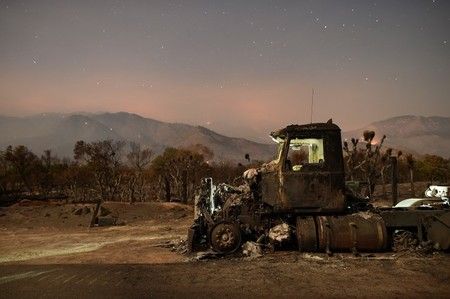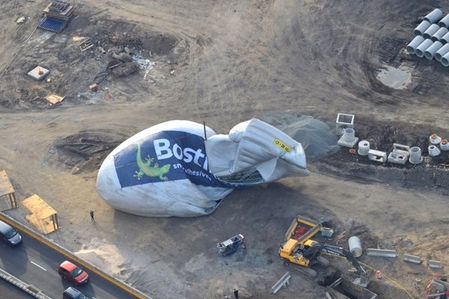Advertisement
Firefighters gain ground over devastating California blaze

By Steve Gorman
LOS ANGELES (Reuters) – Firefighters in the foothills of central California have made significant gains against a blaze that has killed at least two people and destroyed scores of homes in a devastating start to the state’s wildfire season, authorities said on Monday.
Crews had carved containment lines around 40 percent of the fire’s perimeter by Sunday night, up from 10 percent earlier in the day, and evacuation orders were lifted on Monday for two communities previously threatened.
Officials however reported a higher toll of property losses on Monday, with about 250 structures reduced to rubble, 50 more than estimated the previous day, and 75 buildings damaged.
The so-called Erskine Fire had blackened more than 45,000 acres of drought-parched brush and grass by Monday morning on the fringes of Lake Isabella in Kern County, California, about 110 miles (180 km) north of Los Angeles.
The blaze erupted Thursday afternoon and spread quickly through several communities south of the lake, driven by high winds, as it roared largely unchecked for two days and forced hundreds of residents from their homes.
Some 2,500 homes were threatened by flames at the fire’s peak.
On Friday, at least two people were confirmed to have been killed in the blaze. Kern County fire authorities warned that the death toll could rise as investigators combed through the rubble of homes that went up in flames.
Anglican priest Byron McKaig and his wife, Gladys, were killed in the fire, Bishop Eric Menees of the Anglican Diocese of San Joaquin said in a statement.
The cause of the fire was under investigation.
More than 2,000 personnel have been assigned to the blaze, the biggest and most destructive of nine large wildfires burning up and down the state, from the Klamath National Forest near Oregon to desert scrubland close to the Mexico border. Most of those were at least 60 percent contained by Monday.
A blistering heat wave that has baked much of California in abnormally high temperatures ranging from the upper 90s to the triple digits has been a major factor contributing to the conflagrations.
While California’s wildfire season officially began in May, the rash of blazes since last week signaled the state’s first widespread outbreak of intense, deadly fire activity this year.
Daniel Berlant, a spokesman for the California Department of Forestry and Fire Protection, said the state had already experienced some 2,400 wildfires, small and large, since January. They burned a total of 99,000 acres (400 square km).
Winter and spring rainfalls helped ease drought conditions but also helped spur growth of grasses and brush that have since dried out, providing more potential fuel for wildfires, he said.
(Reporting by Steve Gorman; Editing by Bernadette Baum and Paul Tait)






















